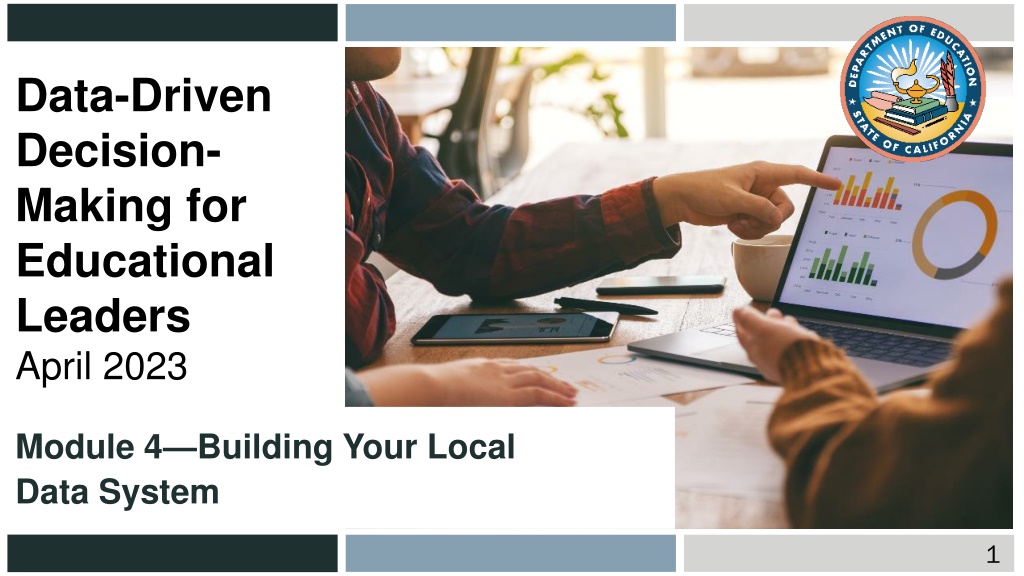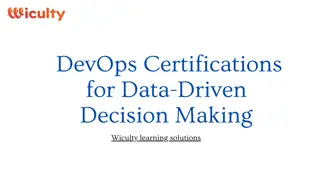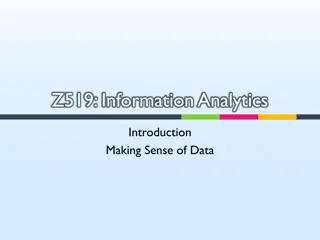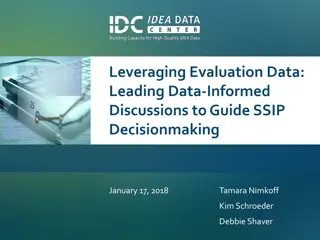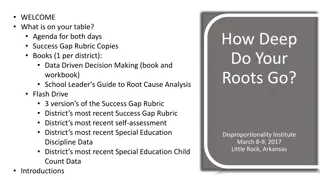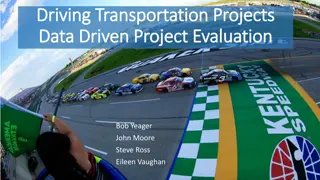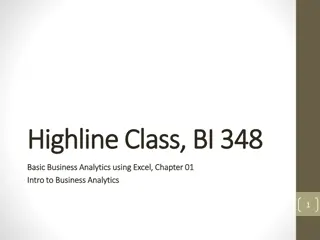Enhancing Educational Leadership Through Data-Driven Decision-Making
Explore the importance of establishing a local data system in educational leadership. Learn how to connect classroom data to summative results, utilize real-time data for instructional decisions, and integrate various data sources for effective decision-making. Dive into activities focusing on actionable data points and making connections between different assessment types. Empower yourself with the knowledge and tools needed to enhance student learning outcomes through data-driven strategies.
Download Presentation

Please find below an Image/Link to download the presentation.
The content on the website is provided AS IS for your information and personal use only. It may not be sold, licensed, or shared on other websites without obtaining consent from the author. Download presentation by click this link. If you encounter any issues during the download, it is possible that the publisher has removed the file from their server.
E N D
Presentation Transcript
Data-Driven Decision- Making for Educational Leaders April 2023 Module 4 Building Your Local Data System 1
Rename Yourself in Zoom At the beginning of your zoom name, add Elementary School (ES); Middle School (MS); or High School (HS). 2
Overview of Training Series Module 1 Starting with the Summative Data Module 2 Formative Data and the California Educator Reporting System (CERS) Module 3 The Ecosystem of Support Module 4 Building Your Local Data System 3
Agenda Using data to make connections Developing a local data system 4
Learning Goals Participants will understand the throughline from classroom data to summative results; the importance of a local data system; and how to develop an effective local data system. 5
Recap 6
Recap: Importance of Data Today - Pandemic-driven interruption in summative data - Your vision for student learning - Real-time data to inform instruction and differentiation 7
Making Connections Classroom or Local Assessments Statewide Assessments Statewide Accountability 8
Using Data to Make Connections What other data do you have access to that can be connected to summative assessment data? 10
Activity: Data Points for Your Local System Be sure they are actionable; easily measurable; and connected to summative data. What data do you use in your district or school to make decisions? 11
What does a robust local data system look like? A Robust Local Data System What are some characteristics? How is it connecting to instruction and student achievement? 12
Robust Local Data System A robust local data system will serve as part of a culture that regularly reviews and acts on data; meet the needs of all students; be accessible by different groups, including teachers and administrators; be understandable by students to assist in independent learner development; and directly connect to proven best practices. 13
Characteristics of a Robust Local Data System Embedded in the vision and culture of the organization Tied to the work of multiple departments Easy to access Easy to understand Actionable Timely and regularly updated 14
How Does A Local Data System Connect to Instruction and Achievement? Presented in a way that facilitates differentiation Fosters growth mindset Prioritizes learning Encourages collaboration 15
Take a few minutes to reflect on your current local data use plan: What has worked well? Reflection What needs to be changed for next school year? 16
Breakout Group Discuss your district's successes with using data this school year. What are some changes for the upcoming school year? 17
Use this time to prepare your plan for effectively utilizing local data. Planning for Next Year Be specific about how it will be robust; be characterized by actionability; inform instruction; and foster students' growth mindsets. 20
What data points will you use? Breakout Groups: Local Data Plan Template Frequency of data review Who will look at the data? When will the data be reviewed? What will you do with the data? How will students receive feedback? 21
Questions to Consider What are the updates I will make for this school year? Who do I need to collaborate with to bring about this change? How will I gather buy-in at my school or district? How will I share this information with others? 22
Breakout Group: Key Takeaways 23
Questions 24
Thank You! 25
